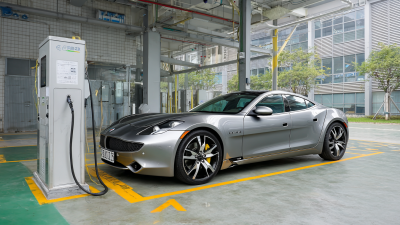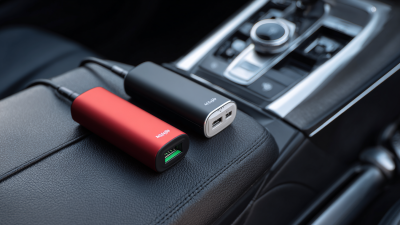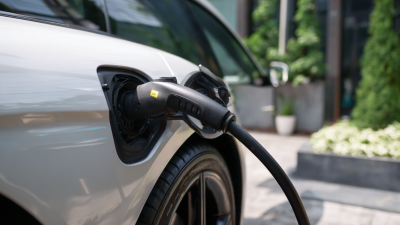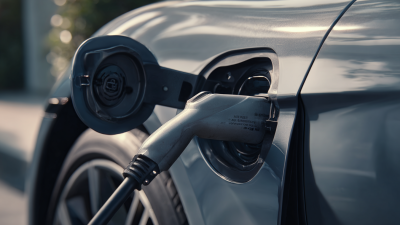
Wall Mounting EV Charge Station
Innovative Approaches for Efficient Home Wall Ev Charge Station Installation
The rapid growth of electric vehicles (EVs) has significantly influenced the demand for convenient charging solutions, particularly at home. According to a report by the International Energy Agency, the number of EVs on the road has surpassed 10 million globally, highlighting the urgent need for efficient charging infrastructure.

Among the most effective solutions are Home Wall EV Charge Stations, which provide a streamlined and accessible way to charge electric vehicles overnight. Recent studies indicate that the availability of a home charging station can increase EV adoption rates significantly, by as much as 70% in certain demographics.
As the EV market continues to expand, innovative installation approaches are essential to enhance user experience and optimize space utilization. In this blog, we will explore cutting-edge strategies for the efficient installation of Home Wall EV Charge Stations, ensuring that homeowners can seamlessly integrate this essential technology into their living environments.
Innovative Charging Solutions: Redefining Home Wall EV Stations
The transition to electric vehicles (EVs) is reshaping home energy consumption and infrastructure. As the demand for EVs continues to surge—predicted to reach 30% of global vehicle sales by 2030—home wall charging stations are becoming increasingly vital. Innovative charging solutions are redefining the way these stations are integrated into residential settings, allowing for seamless energy management and enhanced convenience. For instance, solutions that cater to various power configurations can now be installed in diverse environments, whether single-phase or three-phase, accommodating the specific needs of homeowners.
Recent advancements in charging technology are also addressing key challenges such as charging speed and theft. The innovation in bi-directional charging systems emphasizes the importance of not just charging EVs but also utilizing stored energy to power homes or feed back into the grid. With reports indicating that effective infrastructure could increase the adoption rate of EVs by 50%, integrating robust home charging solutions is essential. As manufacturers focus on developing secure, reliable, and user-friendly home charging stations, the landscape of personal EV ownership is set for a transformative shift, ensuring that charging capabilities evolve alongside the growing electric vehicle market.
Streamlined Installation Techniques for Enhanced Efficiency
The installation of home wall EV charge stations is becoming increasingly vital as the adoption of electric vehicles (EVs) surges. According to a report by the International Energy Agency, the number of electric vehicles on the road is projected to reach 145 million by 2030, dramatically increasing the demand for efficient charging solutions. Innovative approaches to installation can streamline this process, enhancing both time efficiency and safety for homeowners.
One essential tip for a streamlined installation is to assess the electrical capacity of your home before selecting a charge station. Many residential electrical systems are not equipped to handle high-voltage chargers without upgrades, potentially delaying your installation. Collaborating with a licensed electrician can help ensure optimal compatibility and safety standards are met. Furthermore, considering smart charging options can significantly improve energy management and reduce costs, as many systems offer timers and apps to monitor usage.
Another approach is to utilize standardized mounting systems that can accommodate various charge station brands. Research indicates that homes with pre-installed infrastructure—such as conduits and dedicated circuits—experience installation timelines reduced by up to 30%. Planning your installation with future expansion in mind can also pay dividends, allowing for the easy addition of further chargers or smart home integrations as technology advances.
Sustainable Materials and Design in EV Charge Station Development
As the electric vehicle (EV) market continues to expand, the integration of sustainable materials in the design and installation of EV charge stations has become a critical focus. Utilizing eco-friendly materials not only reduces the environmental impact during construction but also enhances the longevity and overall performance of the charging infrastructure. Biodegradable composites and recycled metals are increasingly being used, making it possible to create stations that align with the principles of circular economy and sustainability.
Moreover, innovative design strategies are key to maximizing efficiency in installation processes. Modular designs allow for easier transportation and installation, significantly reducing construction time and resource waste. By incorporating renewable energy sources, such as solar panels, into the charging stations, we can further promote sustainability while ensuring that the energy supplied to these stations is clean. These advancements not only foster a greener future but also pave the way for broader adoption of electric vehicles, addressing both consumer demand and environmental challenges.
Impact of Smart Technology on Home Charging Stations
The integration of smart technology into home charging stations is revolutionizing the way electric vehicle (EV) owners approach charging. According to a report by MarketsandMarkets, the smart EV charging market is projected to grow from $3.4 billion in 2022 to $13.9 billion by 2027, reflecting a compound annual growth rate (CAGR) of 32.2%. This surge is largely fueled by the demand for more efficient charging solutions that adapt to users' needs and optimize energy consumption, enhancing not only convenience but also operational cost savings.

Smart home charging stations leverage advanced features such as real-time monitoring, load management, and integration with smart grids. These technologies allow users to schedule charging during off-peak hours, thus taking advantage of lower electricity rates. Furthermore, according to a study by the International Energy Agency, the implementation of smart charging can reduce overall electricity costs for households by up to 30%. As more homeowners invest in EVs, the shift towards smart charging solutions is essential for maximizing efficiency and sustainability in our energy consumption patterns, propelling the entire electric vehicle ecosystem forward.
Future Trends: Smart Integration and Renewable Energy Sources in EV Charging
As electric vehicles (EVs) proliferate globally, the integration of renewable energy sources and smart technologies in EV charging stations is becoming increasingly essential. The market for smart EV chargers is projected to grow significantly, reflecting a shift towards more automated and efficient energy management systems. This trend aligns with the rising demand for sustainable solutions in transportation, which not only enhances the user experience but also promotes a greener environment.

Smart integration is revolutionizing how we charge our vehicles, with advancements in artificial intelligence and smart grid technology leading the charge. These innovations allow for more efficient energy distribution, optimal charging times, and the ability to harness renewable energy sources such as solar and wind. By strategically aligning EV charging stations with clean energy, we can minimize carbon footprints while maximizing the utility of available resources, paving the way for a more sustainable future in transportation.
The potential growth in this market, alongside the increasing reliance on smart technologies, signifies a critical turning point in the fight against climate change.
Related Posts
-

2025 Trends Revealed 7 Key Innovations in Best Ev Charger Technology
-

Unleashing Innovation in Portable EV Chargers from China Quality Assurance for Global Buyers
-

The Complete Guide to Choosing the Best V2L Adapter for Your Needs
-

7 Tips for Choosing the Best AC Ev Charging Cable for Your Electric Vehicle
-

Challenges Encountered with Ac V2l Cable in Electric Vehicle Charging

